While the crowds of summer tourists at Montana’s Glacier National Park begin to thin, construction crews are pushing to complete several much needed infrastructure projects that have been accelerated by recent federal funding.
By the end of the 2023 construction season, work that began last year on major repairs and improvements to 13 bridges in the park should be complete. The $9.7 million spent on the repairs came from a 22% increase in funding to the National Park Service from the Infrastructure Investment and Jobs Act (IIJA) enacted in 2021.
This fall also marks the completion of Phase 10, or the final phase, of the restoration and repair work on the landmark Going-to-the-Sun Road (GTSR), which began 16 years ago. The repair work on the last 9.3 miles at the west end of the historic highway will be completed in conjunction with the full replacement of the aging and structurally compromised McDonald Creek bridge accessed from the GTSR.
The Federal Highway Administration (FHWA), which has directed the project, was awarded just under $23 million for the project.
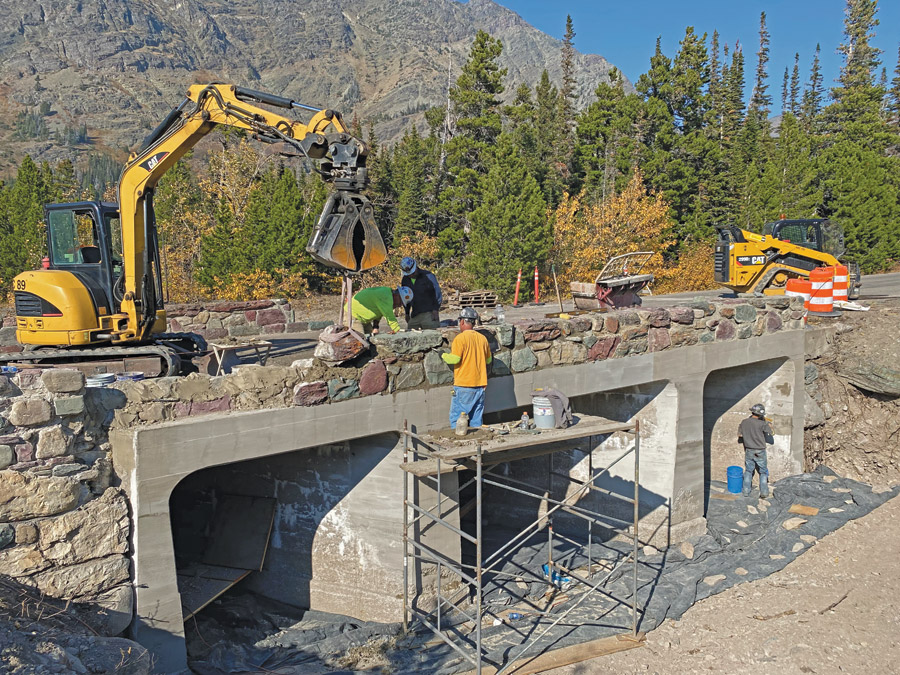
Repairs to the stone masonry on the Appistoki bridge are completed using rock quarried just outside the park. Stones matching the original material preserve the natural look and historic quality of the park, which was founded in 1910.
Photo courtesy of U.S. National Park Service
End of the Road
According to the National Park Service, Glacier National Park in northwest Montana, has averaged around 3 million visitors each summer in recent years. At some point, nearly all visitors will travel on the 50-mile-long GTSR, and, for many, driving or riding in one of the park’s 1930s-era vintage red shuttle buses is as great an attraction as the park’s lakes and glaciers.
Completed in 1932, GTSR climbs from the valley floor, hugging the mountainside and providing sweeping views of the park’s landscape to reach its midpoint at Logan Pass, the Continental Divide, at an elevation of 6,646 ft. With its stone retaining walls, arched bridges, horse underpasses and mountain tunnels, GTSR is recognized as both a civil engineering and national historic landmark.
In the mid-1990s, officials with the National Park Service and the FHWA became concerned about the condition and integrity of the road after decades of harsh weather, avalanches, rockfall and a steady flow of cars. According to material from the NPS, all the bridges and tunnels on the GTSR included historic features that required custom solutions from engineers, landscape architects, preservationists and contractors. A multiphased project to repair and improve the road was implemented as funding became available.
“Getting a batch of concrete or materials to the site and adhering to the speed limits on gravel roads and dealing with the traffic and tourists can be difficult. You really have to time things just right.”
—Steven Burch, President, Missouri River Contractors
Work got underway in 2007 and continued each year as construction crews managed myriad challenges including harsh weather, a limited construction season and maintaining traffic access. A key component of the improvement project was mitigating rockfall from the steep mountainside onto the road. Particularly steep slopes above the road were scaled by workers who broke loose rock away by hand while larger portions were scraped using heavy equipment. Other sections were secured using rock bolt reinforcement. Bolts were driven 15 ft or more into the rock, tensioned and then grouted. Historic masonry retaining walls were repointed and repaired with stone matching the original material.
With the expected completion of Phase 10 this fall, the project will have cost approximately $190 million.
Michael Traffalis, the FHWA project engineer who has managed the GTSR restoration and improvement project, says there were several reasons for postponing work on the final section of the road.
“We didn’t tackle this section [of GTSR] because there is an aging sewer line under the road we knew had to be replaced. The funds for rehabbing the highway couldn’t be used for utilities,” he says. “We knew the Park Service was working on getting the funding to replace [the sewer line] and we didn’t want to build the road only to come back in a few years and cut it up.”
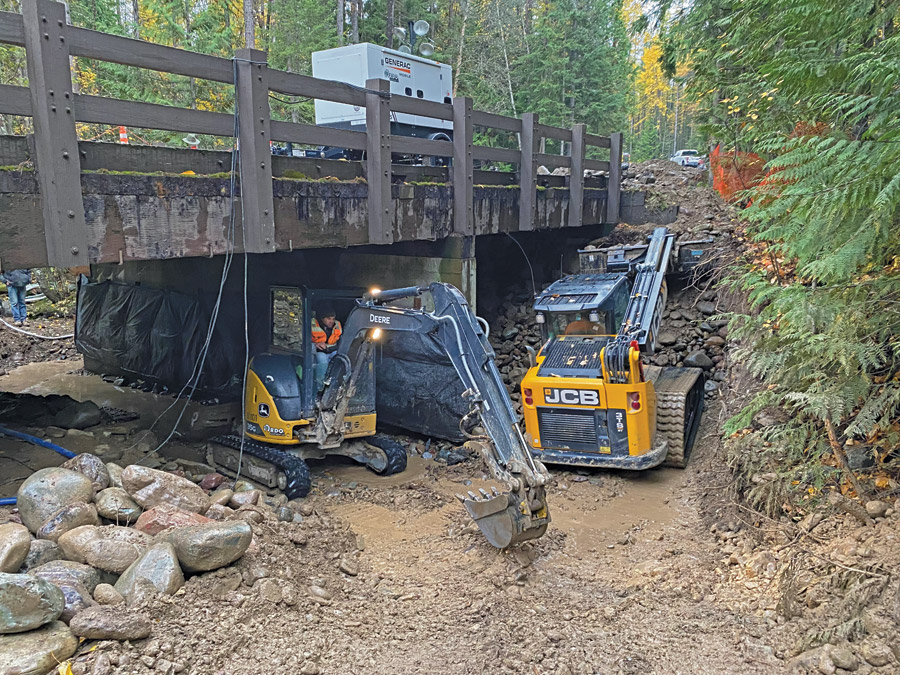
Repairs to concrete piers and riprap were scheduled to avoid spawning season for fish. Working in the riverbeds was a challenge. Crews had to drive steel sheet piles and pipe water around the worksite to complete the repairs.
Photo courtesy of U.S. National Park Service
The road also accesses the McDonald Creek bridge, which was structurally compromised years ago and also needed to be replaced, he says.
The delay proved beneficial. In 2020, with funding from the newly passed Great American Outdoors Act, the team saw an opportunity to complete the road work and replace McDonald Creek bridge.
“Under regular Park Service funding, they were still looking at 10 to 15 years before they could replace [the bridge],” says Traffalis. “We worked with the Park Service to put in an application that included funding the last segment of the GTSR and lumped in ... the McDonald Creek bridge replacement. The Park Service was able to secure the funding for the utility line and worked it out so we would replace that and then use the GAOA funds to pave the road.”
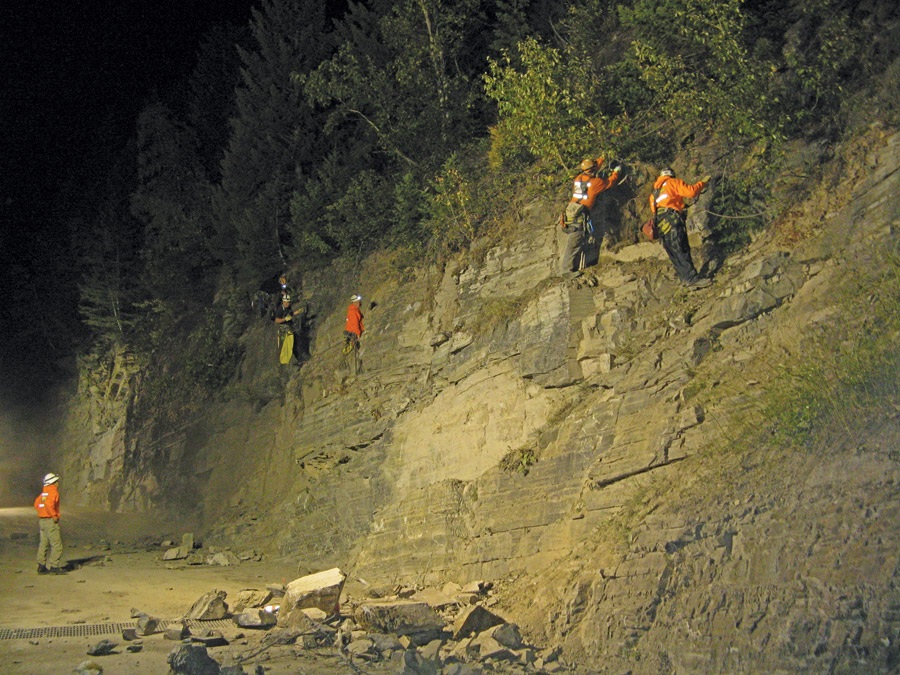
During a night road closure, workers scale a sheer rock wall along the Going-to-the-Sun Highway to break away loose rock or place bolts as part of rockfall mitigation efforts during the multiphase repair and improvements on the historic road.
Photo courtesy The Federal Highway Administration
Complicated Connection
Built in 1965, the existing timber-trestle, multispan, single-lane McDonald Creek bridge provides the only road access from the GTSR to Lake McDonald Lodge, the ranger station, trails and a host of cabins held by families who owned the properties before the national park was established in 1910.
Traffalis says about 15 years ago some of the glulam beams began to separate, and recently a concrete pier developed a crack. While repairs had been made, the bridge was still load restricted, which caused a number of problems.
“Three years ago, we had a fire threatening the lodge and cabins, and because of the load restrictions, the loaded fire tender trucks couldn’t get back there,” Traffalis says.
“When people who lost cabins in the fire wanted to rebuild, fully loaded trucks with lumber and concrete couldn’t cross that bridge. There was really a need to get this bridge done so we can service the needs of the lodge, the park and manage the lands on the other side of it,” he adds.
The new bridge is located 30 ft upstream of the current bridge, which will remain in service during construction. The project’s general contractor, Anchorage-based Brice Civil Constructors, has installed a temporary bridge for construction equipment adjacent to the new bridge site. Unlike the existing bridge with its spans of glulam timber, the new steel clear spans will not require piers in the creek bed, which will improve fish and wildlife habitat, Traffalis says.
Work on the final stretch of the GTSR, which has a T intersection with McDonald Creek Road leading to the bridge, will primarily involve milling, resurfacing and widening a curve. McDonald Creek Road will be realigned, and the approaches to the bridge raised approximately 6 to 8 ft.
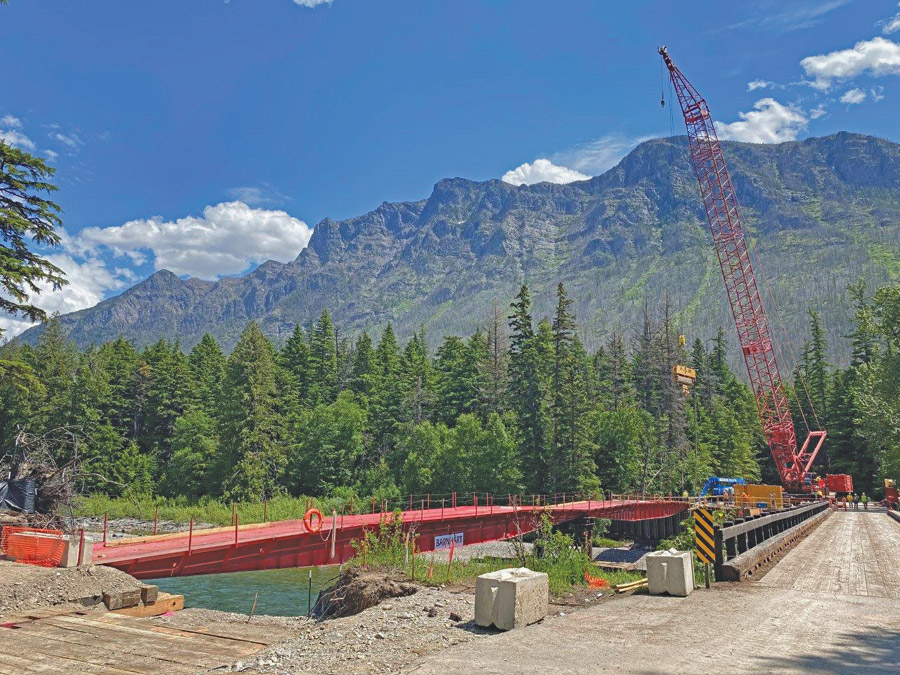
Load restrictions on the existing McDonald Creek bridge required installation of a temporary bridge to accommodate equipment needed to install the replacement. The new steel span bridge is expected to be in place next year.
Photo courtesy The Federal Highway Administration
Bridgework Backlog
While the new bridge over McDonald Creek is expected to be complete next year, a project launched last year to rehabilitate and restore 13 other bridges in the park should be completed this fall.
The project was funded by the Federal Lands Transportation Program with appropriations from the IIJA. Helena, Mont.-based Missouri River Contractors was awarded the contract, and, according to Steven Burch, company president, work is ahead of schedule.
The project was directed by engineers with the NPS, and, according to a statement from the engineering team, the goal was to “improve and extend the life of the existing bridges. [Work] included abutment and wingwall pile replacement, riprap and gabion basket and boulder placement, gravel approach stabilization, timber replacement, concrete repairs, milling and overlaying, concrete sealing, painting and more.”
Working in the park is challenging, Burch says. “You can improve the bridges structurally but not change them aesthetically. The concrete forms have to match what was there before. The lumber has to look very much the same. The rocks have to be inspected and color checked before we bring them in and place them.”
The project management team said scheduling the sequence of repairs on the various bridges was heavily influenced by “visitation season, wildlife and weather.”
Construction began with the less trafficked bridges, which remained open during the repairs. Work on bridges that required full closure, like the more heavily traveled one over Appistoki Creek, was done outside of the peak tourist months of June through August.
Working in the streambeds and diverting water was one of the greatest challenges. According to the project management team, “There was great difficulty in diverting the streams.... Initially, we attempted to dam the creek on the upstream end and direct water through large HDPE pipes. A lot of water flowed through the rocky streambeds and into the work area. Plan B was to divert the stream using large water filled sacks, but similarly, water flowed under these and into the work area.” The decision was eventually made to drive sheet piling and divert the water through pipes around the project area. “We’re trying to disturb the fish in rivers as little as possible. It’s not the best thing for them to have to go through the pipes. We don’t work during the spawning season so our window to do the work is pretty small so it’s what we had to do.”


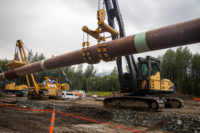
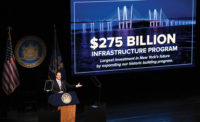
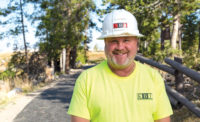
Post a comment to this article
Report Abusive Comment